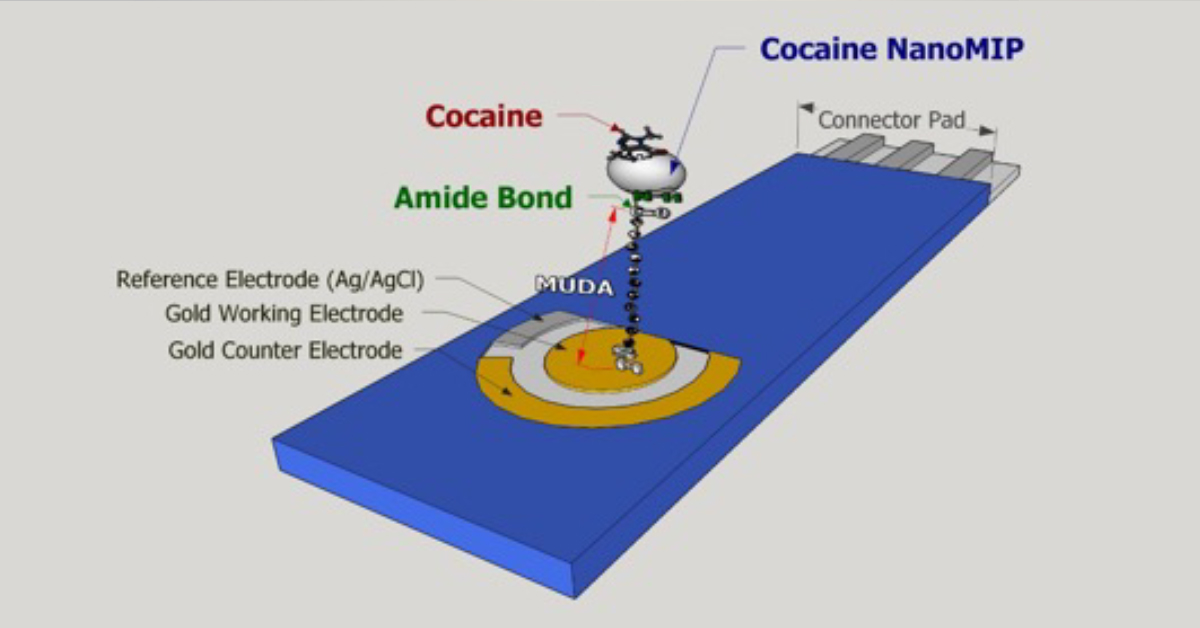
Dr D’Aurelio has a new publication on nanoMIP EIS sensor as a result of her previous research activities (PhD in Biomedical Engineering, Cranfield University, UK).
Abstract: The nanoMIPs were first characterized by Transmission Electron Microscopy (TEM) and Dynamic Light Scattering and found to be ~148.35 ± 24.69 nm in size, using TEM. The nanoMIPs were then covalently attached to gold screen-printed electrodes and a cocaine direct binding assay was developed and optimized, using EIS as the sensing principle. EIS was recorded at a potential of 0.12 V over the frequency range from 0.1 Hz to 50 kHz, with a modulation voltage of 10 mV. The nanoMIPs sensor was able to detect cocaine in a linear range between 100 pg mL−1 and 50 ng mL−1 (R2 = 0.984; p-value = 0.00001) and with a limit of detection of 0.24 ng mL−1 (0.70 nM).
The development of a sensor based on molecularly imprinted polymer nanoparticles (nanoMIPs) and electrochemical impedance spectroscopy (EIS) for the detection of trace levels of cocaine is described in this paper. NanoMIPs for cocaine detection, synthesized using a solid phase, were applied as the sensing element.
The sensor showed no cross-reactivity toward morphine and a negligible response toward levamisole after optimizing the sensor surface blocking and assay conditions. The developed sensor has the potential to offer a highly sensitive, portable and cost-effective method for cocaine detection.
View Full-Text >